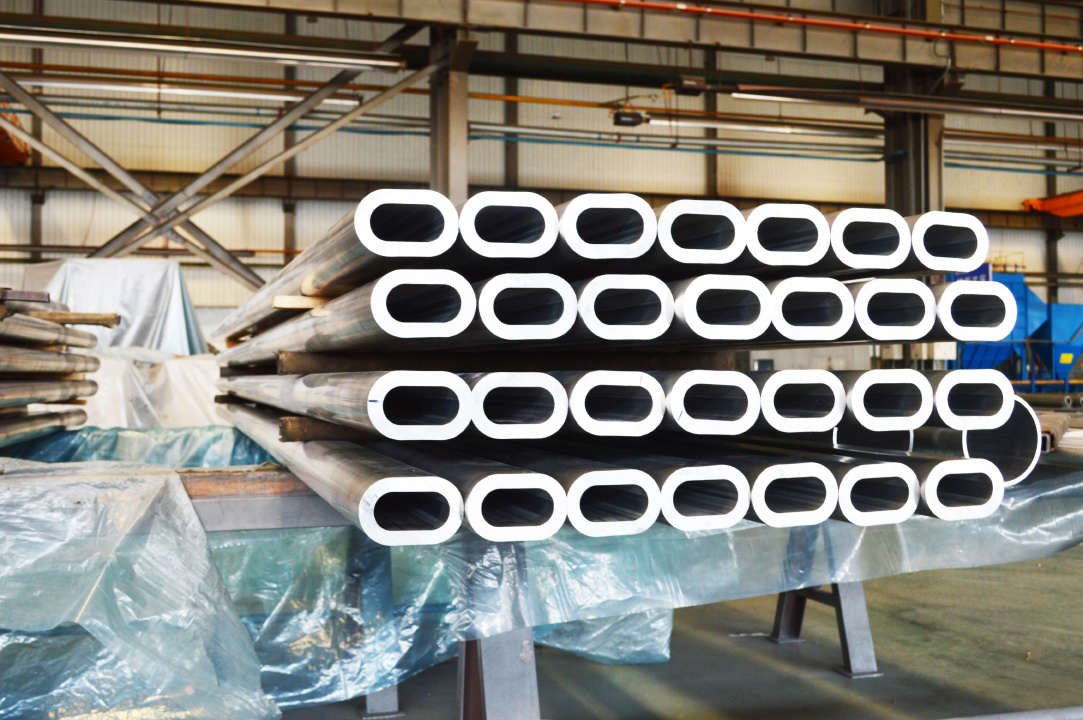Why 2011 Aluminum Alloy is the Ultimate Choice for Precision Machining
Why 2011 Aluminum Alloy is the Ultimate Choice for Precision Machining In the realm of precision machining, materials play a pivotal role in determining the quality and performance of the final product. Among the various alloys available, **2011 aluminum alloy** consistently emerges as the premier choice for manufacturers seeking exceptional results. This article explores the unique properties tha
Jul 02,2025
Why 2011 Aluminum Alloy is the Ultimate Choice for Precision Machining
In the realm of precision machining, materials play a pivotal role in determining the quality and performance of the final product. Among the various alloys available, **2011 aluminum alloy** consistently emerges as the premier choice for manufacturers seeking exceptional results. This article explores the unique properties that make 2011 aluminum alloy ideal for precision machining, its wide range of applications, and the techniques that enhance its usability in the manufacturing industry.
Table of Contents
- 1. Introduction to 2011 Aluminum Alloy
- 2. Key Properties of 2011 Aluminum Alloy
- 3. Benefits of Using 2011 Aluminum Alloy in Precision Machining
- 4. Applications of 2011 Aluminum Alloy in Various Industries
- 5. Effective Machining Techniques for 2011 Aluminum Alloy
- 6. Addressing Challenges in Machining 2011 Aluminum Alloy
- 7. How 2011 Aluminum Alloy Compares to Other Alloys
- 8. Conclusion
- 9. Frequently Asked Questions
1. Introduction to 2011 Aluminum Alloy
The **2011 aluminum alloy**, classified under the 2000 series, is renowned for its exceptional machinability and corrosion resistance. This alloy mainly consists of aluminum, copper, and traces of other elements, which contribute to its unique properties. Its excellent performance in precision machining tasks makes it the favored metal for engineers and manufacturers who prioritize accuracy and efficiency.
2. Key Properties of 2011 Aluminum Alloy
2.1 High Machinability
One of the standout characteristics of 2011 aluminum alloy is its **high machinability**. This alloy can be easily shaped, cut, and formed using standard machining techniques, which significantly reduces production time and costs.
2.2 Excellent Surface Finish
When machined, 2011 aluminum alloy achieves a superior surface finish, making it ideal for applications where aesthetics and precision are crucial. The smooth surfaces reduce the need for additional finishing processes, further streamlining manufacturing.
2.3 Lightweight yet Sturdy
While aluminum is known for its lightweight nature, 2011 aluminum alloy provides a good strength-to-weight ratio. This quality is particularly beneficial in industries where minimizing weight without sacrificing strength is essential, such as aerospace and automotive.
2.4 Corrosion Resistance
The alloy's natural corrosion resistance ensures durability and longevity in various environments. This resistance is a significant advantage in applications exposed to moisture or harsh chemicals.
3. Benefits of Using 2011 Aluminum Alloy in Precision Machining
3.1 Cost-Effectiveness
Utilizing 2011 aluminum alloy can lead to substantial cost savings due to decreased tooling wear and reduced machine time. The efficiency of this alloy allows manufacturers to achieve more in less time, enhancing overall productivity.
3.2 Versatility in Applications
2011 aluminum alloy is highly versatile, making it suitable for a wide array of applications, from automotive parts to complex aerospace components. Its adaptability allows it to meet the diverse needs of various industries.
3.3 Simplified Machining Processes
The ease of machining 2011 aluminum alloy simplifies production processes. Manufacturers can employ standard tools and techniques without the need for specialized equipment, further lowering operational costs.
3.4 Enhanced Performance
Components made from 2011 aluminum alloy often exhibit superior performance due to their precise dimensions and excellent surface finishes. This performance translates into increased reliability and efficiency in end-use applications.
4. Applications of 2011 Aluminum Alloy in Various Industries
4.1 Aerospace Industry
In the aerospace sector, **2011 aluminum alloy** is commonly used for manufacturing intricate components like brackets and housings. Its lightweight and strength characteristics are crucial for improving fuel efficiency and performance.
4.2 Automotive Manufacturing
The automotive industry favors 2011 aluminum alloy for producing parts such as gears and brackets, where precision and reduced weight are essential. The alloy’s machinability allows for the production of complex shapes and designs.
4.3 Electronics
In electronics, 2011 aluminum alloy is utilized for heat sinks and housings due to its thermal conductivity and corrosion resistance. These properties enhance the performance and lifespan of electronic devices.
4.4 Medical Devices
Medical device manufacturers rely on 2011 aluminum alloy for precision components that require stringent quality standards. The alloy’s biocompatibility and ease of sterilization make it suitable for various applications in healthcare.
5. Effective Machining Techniques for 2011 Aluminum Alloy
5.1 CNC Machining
CNC machining is one of the most effective methods for shaping 2011 aluminum alloy. This technology allows for high precision and repeatability, making it ideal for manufacturing intricate designs.
5.2 Tool Selection
Using the right tools is crucial when machining 2011 aluminum alloy. **Carbide tools** are recommended due to their durability and ability to maintain sharp edges, resulting in cleaner cuts and better surface finishes.
5.3 Coolant Use
Applying coolant during machining processes can significantly improve tool life and surface finish quality. Lubrication reduces friction and heat, enhancing the overall machining performance of 2011 aluminum alloy.
5.4 Feed Rate and Speed Adjustment
Adjusting the feed rate and cutting speed is essential for optimizing machining efficiency. Higher speeds can be employed due to the alloy's machinability, but care must be taken to avoid overheating.
6. Addressing Challenges in Machining 2011 Aluminum Alloy
6.1 Tool Wear
While 2011 aluminum alloy is easy to machine, tool wear can still be a challenge. Implementing proper tool maintenance and selection can mitigate this issue, ensuring consistent production quality.
6.2 Surface Finish Consistency
Achieving a consistent surface finish can be challenging, especially with intricate designs. Regular calibration of machinery and tools can help maintain high-quality finishes across multiple components.
6.3 Managing Heat
Heat generation is a concern when machining any material. Utilizing coolants and optimizing machining parameters can help manage heat effectively, prolonging tool life and maintaining precision.
7. How 2011 Aluminum Alloy Compares to Other Alloys
When compared to other aluminum alloys, such as 6061 and 7075, 2011 aluminum alloy stands out for its **superior machinability**. While 6061 is known for its strength and weldability, and 7075 excels in high-stress applications, 2011 excels in complex machining tasks where precision and surface finish are paramount. Each alloy has its unique benefits, but for precision machining, 2011 is often the preferred choice.
8. Conclusion
In summary, **2011 aluminum alloy** offers unparalleled advantages in precision machining, making it the metal of choice for various industries. Its unique combination of high machinability, excellent surface finish, and corrosion resistance ensures that it meets the demanding requirements of modern manufacturing. By employing effective machining techniques and addressing potential challenges, manufacturers can fully leverage the benefits of 2011 aluminum alloy, leading to enhanced productivity and superior product quality. As the industry continues to advance, 2011 aluminum alloy will undoubtedly remain a staple in precision machining applications.
9. Frequently Asked Questions
9.1 What are the main components of 2011 aluminum alloy?
2011 aluminum alloy primarily consists of aluminum and copper, along with small amounts of other elements such as manganese and silicon, which enhance its properties.
9.2 Is 2011 aluminum alloy suitable for welding?
Welding 2011 aluminum alloy can be challenging due to its high copper content. It is generally not recommended for applications requiring welding, as it may lead to reduced strength.
9.3 What industries commonly use 2011 aluminum alloy?
Common industries include aerospace, automotive, electronics, and medical device manufacturing, where precision and lightweight materials are essential.
9.4 Can 2011 aluminum alloy be anodized?
Yes, 2011 aluminum alloy can be anodized, but the results may not be as favorable as with other alloys due to its high copper content affecting the finish.
9.5 What are the environmental impacts of using aluminum alloys?
Aluminum alloys, including 2011, are often considered environmentally friendly as they are recyclable. Recycling aluminum requires significantly less energy than producing new aluminum, leading to lower greenhouse gas emissions.
Latest Developments











